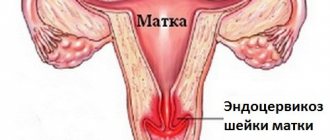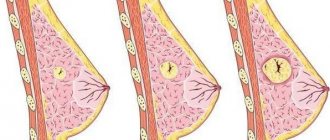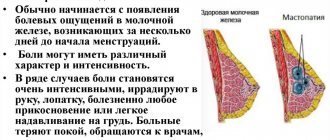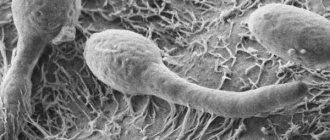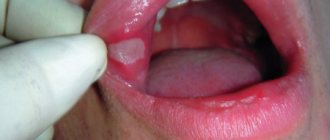The main difference between the human female reproductive system and other animals is the limited ability to reproduce. A woman can only give birth until mid-life. Menopause is a human condition. Animals do not have it, with the exception of dolphins. The female body is unique. During menopause, certain age-related changes occur in the ovary of a person that you need to be aware of. The female reproductive gland (Latin name - ovarium, ovarium) is a paired organ with a limited set of eggs, located near the fallopian tube, popularly often called the uterine appendage. The processes occurring in the aging ovaries during menopause are described by doctor Natalya Malysheva.
Limited follicular reserve
During the period of embryonic development, a certain number of follicles are formed in the female reproductive glands, in which eggs will mature. Initially there are about 500 thousand of them. By the time the body matures, their number normally ranges from 25 to 50 thousand. At puberty, eggs mature monthly in the follicles. By the age of 50–52, a woman’s supply of follicles in the ovaries normally runs out, and menopause occurs. Ovarian depletion before 45 years of age is called early ovarian aging syndrome.
In the human mind, there is a line between the aging of the body and its diseases. Disease is considered a random factor. Aging and menopause are considered to be a natural physiological process. If the aging of the body occurs in a timely manner, gradually adapting to changes, it is called physiological. If it occurs partially and is ahead of the level of aging of peers, it is called premature.
"Climax" after removal of ovaries
If an oophorectomy is performed on an elderly woman who, as they say, has nothing to lose (her ovaries hardly work anyway), the situation is not at all tragic. But the problem is that recently gynecologists are increasingly faced with the need to remove the ovaries in young patients. After the operation, they begin to experience changes similar to those observed in women with preserved ovaries at the age of 50-55 years, when the reproductive system “retires” and menopause occurs.
Symptoms usually begin to appear 2-3 weeks after surgery, and reach their maximum strength after 2-3 months. In the first 1-2 years, vascular tone disorders predominate.
What happens to the ovaries as we age?
At a young age, the female reproductive gland consists of connective tissue, which contains blood and lymphatic vessels, as well as nerves, and of the cortex, in which follicles mature. With age, connective tissue predominates, and thickening and sclerosis of the genital glands occurs. The number of follicles in the ovaries during menopause at the very beginning is minimal; later, in postmenopause, follicles are not normally visualized. The size of the gonads changes accordingly.
In a woman of childbearing age, the average size of the ovary is:
- length 2.5 – 5.0 cm;
- width 1.5 – 3.0 cm;
- thickness 0.5 – 1.5 cm;
- weight 5 – 8 g.
These sizes may vary depending on individual characteristics, body condition and age.
What to do if you have any illnesses
Often, with the onset of menopause, patients feel pain in the lower abdomen, which serves as a sign of the development of pathological situations. A significant increase in the size of the ovaries during menopause can be a symptom of the following diseases in these organs, such as:
- polycystic disease (with the formation of multiple cysts);
- torsion condition;
- benign and malignant neoplasms in the internal genital organs;
- pathological deviations in the structure of an organ or its size.
Many conditions during menopause require surgical treatment methods. Therefore, it is so important to immediately seek examination if pain occurs in the area where the reproductive organs are located. Untimely surgical intervention can threaten the health and even life of the patient. The most dangerous condition during menopause, leading to death, is a tumor that is diagnosed in its last stage. The chance of a successful outcome can only be obtained by detecting the beginning of the pathological process in the organ and performing the operation during this period.
Diseases that occur during menopause, such as polycystic disease, can be cured using therapeutic methods. Drugs that increase the production of female sex hormones - estrogens. The characteristic features of polycystic disease are an increase in the level of male hormone. There is also a lack of female estrogen, so eliminating hormonal imbalance can provide significant assistance in the treatment of ovarian disorders during menopause.
Ovaries during menopause
The normal sizes of the ovaries in premenopause can be considered:
- length 2.0 – 2.5 cm;
- width 1.2 – 1.5 cm;
- thickness 0.9 – 1.2 cm;
- volume 1.5 – 4.0 cm3.
The average volume of the ovary by age is calculated for each decade of life
There is a statistically significant decrease in adnexal volume with each decade of life from 30 years to 70 years. The average size of the ovaries during menopause is significantly higher than in postmenopausal women. The upper limit of normal for ovarian volume is 20 cm3 in premenopausal women and normal postmenopausal ovaries can be up to a maximum of 10 cm3
The volume of the ovaries decreases during menopause. During the menopausal period, single follicles may still be produced, and climacteric ovarian dysfunction begins.
Causes of ovarian aging
There are many hypotheses that explain the etiology of menopause. The most current theories are:
- hereditary predisposition;
- autoimmune disorders;
- environmental impact;
- modifiable factors: chemotherapy, radiation therapy, surgery on the pelvic organs, inflammatory processes of the pelvic organs;
- smoking
These factors can affect the formation of ovaries, which will initially have a deficiency of the follicular apparatus. Some factors are difficult to influence, but others are possible.
Half of women with ovarian wasting syndrome have a family history.
The level of sex hormones decreases by the age of 30
By the age of thirty, the level of female sex hormones begins to decline. By this time, the number of healthy oocytes drops, and their quality also begins to suffer. Conceiving a child becomes more difficult every year. Scientists have proven that after 30 years of age, you are less likely to give birth to a healthy child. Getting pregnant also becomes problematic. If the aging process of the gonads has started in a woman’s body, then the opportunity to become pregnant naturally becomes less and less every year. It is also difficult when solving this issue through IVF.
Considering that healthy and strong oocytes have already been released at a younger age, there is a risk of miscarriage, the birth of children with Down syndrome and other diseases caused by genetic damage.
Other reasons that cause early menopause and reduce the body's response to stimulating factors:
- Pelvic inflammatory disease has a negative impact on ovarian function, but is potentially preventable.
- Endometriosis, although not preventable, can be treated.
- Chemotherapy and surgery on the pelvic joints and ovaries are important causes of premature aging of the ovaries. Surgeons must take this into account during surgery.
- Some treatments aimed at stimulating follicles reduce their supply. And short-term hormone replacement therapy increases the rate of conception after its discontinuation. At the same time, the pregnancy rate increases and the risk of miscarriage decreases. In addition, this process is controlled.
- Chemotherapy that limits the amount of ovarian reserve should not be used unless specifically indicated.
- The same approach should be taken with radiation therapy.
Scientists are thinking about changing the rate of decline in ovarian reserve, but so far there are few proposals. One option is to freeze good quality eggs.
Yes, yes, a prudent woman can freeze her eggs for the future at a young age. For more information on how to protect eggs on the eve of menopause, see Part 2 of this article.
Until now, scientists have not come up with a magic cure that can prolong youth. Every woman can slow down this process.
Stress and anxiety can affect the level of hormones in the body.
How to stimulate the ovaries during menopause?
It also happens that menopause catches a woman too early, when she still wants to give birth to a child. In this case, the question arises of how you can activate the work of the ovaries, and can this be done at all? This can be done, but such manipulations with your body can only be carried out with the permission of the attending physician.
You can do this in the following ways:
- For some women, it will be enough to slightly change their usual diet , lifestyle , and include foods that stimulate estrogen production in their daily menu. These foods include vegetables, fruits, and legumes, but you should try to avoid fatty and fried foods. In addition to nutrition, you need to include moderate and reasonable physical activity in your life, and do not forget about rest.
- There are drugs that contain only estrogens , and there are also combined ones. Choosing them yourself, relying on the advice of friends, relatives and neighbors is very dangerous.
- Taking phytoestrogens will help stimulate ovarian function safely for the body, since phytoestrogens practically do not cause any side effects, and follicles during menopause continue to produce eggs when taking phytoestrogens. Phytoestrogens are analogs of female sex hormones that are found in certain medicinal herbs.
- folk remedies also help restore ovarian function during menopause : horsetail root, licorice root, lungwort and many others. To achieve the desired effect, you need to pour a tablespoon of the selected component with half a liter of water and take it after it has cooled completely, after straining it. Then the follicles will continue to work properly during menopause for some time.
How to make the ovaries work?
Resuming and restoring the functioning of the gonads is very problematic. It is difficult to influence the age of menopause, but nevertheless, we can do what depends on us.
Smoking is a factor that has a detrimental effect on the sex glands. And it depends only on us whether we destroy our eggs or not. To smoke or not to smoke, especially in anticipation of menopause, is a voluntary choice
In addition, you can change your lifestyle and diet. If you do not agree to change your life, then it is unlikely that you will be able to postpone menopause. But by changing your diet and habits, you can gain several years from aging!
Stimulation of ovarian function in menopause
- Hormone replacement therapy can be used during premenopause. But this is a “double-edged sword” - hormonal therapy can lead to the development of malignant neoplasms.
- Stimulating the ovaries in postmenopause is a direct path to cancer.
In order to prevent this, ultrasound must be performed regularly. A pathological condition is when, under the influence of hormonal therapy, the ovaries double in size.
If changes occur during menopause, visible on ultrasound, it can be assumed that some pathological processes have appeared:
- Occasionally, a follicle may be found on the ovary during menopause, and the follicle may cause an increase in sex hormone levels. Ovarian follicles after menopause can appear even at a very old age; there are known cases of their visualization at the age of over 70 years;
Pathologies during menopause
After menopause, the risk of developing ovarian pathologies increases. Therefore, women should undergo a routine examination by a gynecologist every year, which includes an ultrasound of the pelvic organs.
Normally, the ovaries should shrink. When an enlargement of organs is detected during ultrasound diagnostics, it is necessary to undergo a more thorough examination in order to diagnose the emerging pathology.
It could be:
- Cyst. In menopausal women, only 30% have both organs affected. In the vast majority of cases, pathological changes occur in only one ovary - a follicular cyst is formed. These are round anechoic formations with a thin-walled capsule. They occur due to hormonal disorders and can resolve on their own over 2-3 menstrual cycles. When this does not happen, treatment is carried out. If an endometrioid cyst develops, it has a harder capsule and is capable of degenerating into a malignant neoplasm. Therefore, it is removed through surgery.
- Polycystic. With this disease, several cysts can form in the ovary at the same time. Such formation during menopause occurs more often than single cysts. This is due to the fact that the level of female sex hormones has decreased significantly, and the amount of male hormones, on the contrary, has increased. This result is caused by long-term use of oral contraceptives, which were not prescribed by a gynecologist and were not suitable for a particular body. Polycystic disease can be a side effect of taking hormone replacement therapy during menopause.
Hormonal medications treat menopausal symptoms, but they promote the development of tumors. Therefore, you should absolutely not take such medications on your own.
Expert opinion
Alexandra Yurievna
General practitioner, associate professor, teacher of obstetrics, work experience 11 years.
The specific drug, its dose and course of treatment should be prescribed by the attending physician, based on the results of blood tests and studies performed.
Malignant neoplasms
According to medical statistics, ovarian cancer ranks second among cancer diseases leading to death in women after menopause.
Structure of the female ovary.
Therefore, all ladies should know the symptoms of ovarian cancer:
- Pain appears in the pelvic area, which causes discomfort to the woman.
- There is bloating or bloating in the abdomen, as if you overeat.
- Persistent indigestion, which should be a reason to visit a doctor and undergo a medical examination.
- The frequency of urination increases. Moreover, every time there may be a urge to immediately urinate.
- Appetite worsens.
- A woman’s weight changes very quickly, either increasing or decreasing.
- The waist size increases.
- Sexual intercourse causes pain.
- The lower back or lower abdomen may hurt.
With the development of ovarian cancer, these signs may be constantly present, and they will also get worse. The most basic symptom of the development of a cancerous tumor is the presence of blood in the urine, feces and sputum. Moreover, this symptom manifests itself both with a small size of the malignant neoplasm and with a large tumor.
What you need to know about ovarian cancer
The main causes of ovarian cancer include lack of childbirth and abortions. Hormonal medications taken may provoke the development of malignant neoplasms.
All women need to know what to do if they notice these symptoms and suspect the development of cancer. You should immediately undergo examination by a gynecologist and oncologist. So, the lady will save her health and life.
Cancer has 4 stages, which differ in the distribution of the disease in the female body:
- Stage I – the tumor has formed on only one ovary.
- Stage II – the neoplasm develops on one or two organs, but it has simultaneously spread to the pelvic area.
- Stage III – the tumor affects one or two ovaries, and metastases are located outside the pelvis and can penetrate the retroperitoneal lymph nodes.
- Stage IV – a malignant tumor is present on one or both ovaries, and metastases already have a separate pattern of spread and manifestation.
In the early stages, the disease is easier and faster to cure. The main treatment for cancer is surgery. Chemotherapy is used in combination with it. Radiation therapy for the development of ovarian cancer is ineffective.
Expert opinion
Roman Andreevich
Candidate of Medical Sciences, gynecologist-obstetrician, 14 years of work experience.
To get a consultation
It can only be prescribed in combination with the types of therapy already discussed. Hormonal therapy is purely auxiliary.
Pathological processes in the gonads
- Ovarian cysts of various etiologies. Benign serous tumors include cystadenomas, adenofibromas, cystic adenofibromas, and superficial papillomas. These tumors are common, accounting for about 25% of all benign ovarian tumors. Ovarian cystadenomas during menopause are bilateral in about 10% of all serous tumors, about 70% are benign, 5-10% have borderline malignant potential and 20-25% are malignant, depending on the age of the patient. Sometimes cystadenomas reach gigantic sizes. In 1922, Spohn reported that he diagnosed a giant ovarian cystadenoma in menopause with a weight of 148.6 kg. Symmonds, in 1963, reported a cyst weighing 79.4 kg.
- malignant neoplasms (ovarian cancer);
- a large and lumpy ovarian may be due to metastasis to the gonad from other organs.
The most dangerous for women are malignant processes, which can be determined by ultrasound and using tumor markers.

